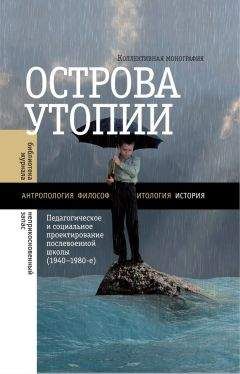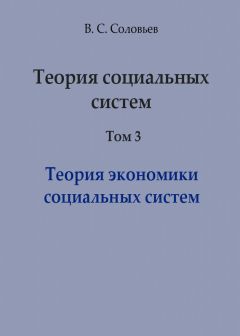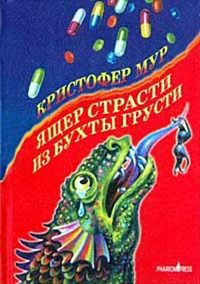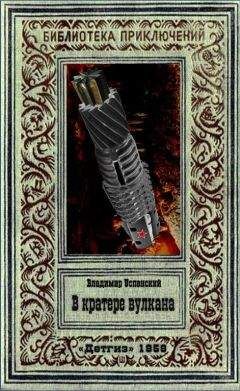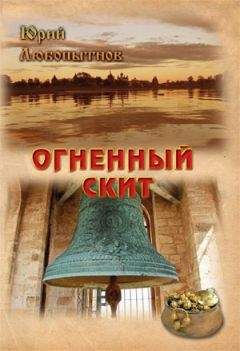Петр Сафронов окончил философский факультет МГУ и там же защитил диссертацию в области феноменологической философии. Руководит магистерской программой «Доказательная образовательная политика» в Институте образования Высшей школы экономики в Москве. Его научные интересы сосредоточены в области новейшей истории образования в России, Европе и США. Он также занимается вопросами, связанными с теоретическим и практическим изучением форм рефлексивного самоопределения субъекта. Этим проблемам посвящена его книга «Случайный порядок» (2012).
Евгений Ямбург – педагог, публицист, общественный деятель. Доктор педагогических наук, член-корреспондент Российской академии образования, директор московского Центра образования № 109, известного также как Школа Ямбурга. Инициатор издания и главный редактор серии книг и хрестоматий «Антология выстаивания и преображения. Век XX» – произведений литературы, мемуаристики и публицистики, авторы которых (представители разных стран мира, национальностей, вероисповеданий) в XX в. прошли опыт противостояния государственному насилию и борьбы за свободу. Разработчик и автор адаптивной модели школы– разноуровневой и многопрофильной общеобразовательной массовой школы с набором классов различной направленности. Автор книг «Педагогический ансамбль школы» (1987), «Воспитание историей» (1988), «Школа для всех. Адаптивная модель (Теоретические основы и практическая реализация)» (1996, в 1997 признана лучшей книгой года по педагогике в России), «Школа на пути к свободе: Культурно-историческая педагогика» (2000), «Управление развитием адаптивной школы» (2004), «Педагогический Декамерон» (2008), «Основополагающие документы школы. Стратегия и тактика развития современной школы: методическое пособие» (2010), «Школа и ее окрестности» (2011).
This volume examines Soviet schools of the 1940s – 80s in a broad comparative context, in order to highlight both their specifically Soviet properties, as well as those features conditioned by general social processes at work in parallel in the “first” and “second” worlds – on both sides of the “Iron Curtain.” Our preliminary hypothesis was that the strong points of late Soviet education, strange though it may seem, resulted from its hidden diversity. The diversification of education was gradual, not openly declared and not subject to public discussion. It reached its zenith toward the end of the 1980s.
The 1950s – 60s saw the privatization of the state utopian vision of the man and the society of the future: the state ceased to be perceived as an absolute monopolist and the only such body that could be trusted with this kind of work. Despite the widespread belief in all-encompassing state control over all areas of Soviet society, many of the educational initiatives investigated in this volume existed, as it were, in the shadow of the Party and bureaucratic apparatus, sometimes taking on a quasi-legal “partisan” character. In the USSR and “second-world” countries, educational experiments represented one of the few available opportunities for social action, which allowed for the formation of “uniquely designed” models of the future. Some of the educational and social models created in the USSR and second-world countries during the Cold War have maintained their creative potential to the present day.
On the whole, we can trace two conflicting, competing trends in 1950s – 80s Soviet school policy: a movement toward diversity and a tendency to unification (the latter was expressed in dogged attempts to create a single scale for evaluating educational activity, identical for all teachers and educational institutions). The striving toward ideologically motivated uniformity continues to exert a negative influence on educational policy in Russia today, while diversification represents a potentially fruitful experiment that should be taken into account and studied further.
For first– and second-world countries alike, the 1950s – 60s were a time when, after a hiatus of three decades, utopian projects began to be produced once again with wild enthusiasm. This coincidence was precipitated by the crisis of modern societies and their transition toward a new postindustrial state. This volume correlates some of these projects, undertaken in various countries, with the methods and forms of their partial realization. These utopias constitute the legacy not only of Russia and other post-Soviet states, but of European educational culture overall.
From the school to the child
Maria Mayofis (Russian Academy of National Economy and Public Administration, Moscow), “Foretokens of the ‘Thaw’ in late Stalinist Soviet school policy”
This chapter demonstrates how the pedagogical and administrative concept of the “individual approach” took shape and, with great difficulty, forged its way in the USSR; this approach remotely but not accidentally resembles the theory of “child-oriented pedagogy” developed by educational specialists in the US. The changes in school policy initiated by the Russian Soviet Federative Socialist Republic in 1944 – 1949 are investigated here for the first time. Under the influence of the Stalin-era totalitarian educational policy and the social consequences of the Second World War, the USSR faced an acute crisis of its educational system. Given the severe deficit of resources and the impossibility of shortening school programs for the improvement of the quality of school education, the ministry had only one option: to encourage as much as possible those teachers who seriously studied each child and sought to understand him/her.
This study shows that the rather less than successful efforts to reform schools in the late 1940s brought fruit only toward the end of the 1950s and into the 1960s; in even longer view, they led to the emergence of a broad-based innovative pedagogical movement in the 1970s – 80s. The results of the study allow us to question the customary periodicization of the history of Soviet pedagogy and educational policy, which has been based on the overall political periodicization, wherein Stalinism is followed by the “Thaw.”
Maria Cristina Galmarini (James Madison University, Virginia, USA), “Morally Defective, Delinquent, or Psychically Sick?: Child Behavioral Deviations and Soviet Disciplinary Practices (1935 – 1957)”
This chapter explores how, in the years between 1935 and 1957, a pathologizing but also rehabilitative and integrating understanding of behaviorally anomalous children existed side by side with criminalizing, punitive, carcerial, and violent methods of correction. The author argues that defectological – i.e. medico-pedagogical – ideas and practices were sustained by a group of child psychiatrists who used the construct of trauma to represent misbehaving children as suffering victims of the war, deserving help in state-run care facilities rather than punishment in labor colonies for minors. Although mostly articulated in specialized journals and in the advocacy of a few committed activists, this counter-discourse nonetheless heralded the emergence, under Khrushchev, of child-centered pedagogies and more humane institutional approaches to “difficult” children.
Ilya Kukulin (National Research University – Higher School of Economics; Russian Academy of National Economy and Public Administration, Moscow), “ ‘Training the will’ in Soviet psychology and children’s literature of the late 1940s-early 1950s”
This chapter focuses on the pedagogical and psychological context of a story by the Soviet children’s writer Vitali Gubarev, “The kingdom of crooked mirrors” (1951) – a fantastical adventure story that remains popular to this day in Russia. Until 1951, Gubarev was known as the author of propagandistic texts, and his turn to the fantastical seems unexpected. Kukulin shows that in his story, Gubarev attempted to use literature to illustrate the ideological campaign unfolding in Soviet pedagogy and psychology in the late 1940s. This campaign was devoted to “training the will.” Works published by contemporary psychologists assumed that school-age children would start to train themselves, and would with the help of will-power become model citizens of the Soviet state. The demand that children behave like literary protagonists was declared to be the primary pedagogical tool in this effort.
However, training the will required autonomous personalities and psychological reflection; both of these psychological practices were undesirable in the USSR. In these circumstances, the image of the “child studying its own personality” was carried over from practical pedagogical discussions into children’s literature. But in literature, too, the attempt to flesh this out led unexpectedly to the erosion of socialist realism: in order to show reflection in a form that children could grasp, Gubarev made use of the tradition – very far from sotsrealism – of play with doubles, in the spirit of Shakespeare’s “Twelfth Night.” Thus, the hidden crisis of didactic thought in the late 1940s-early 1950s aided in the development of new aesthetic principles in children’s literature.
The social contexts of educational reforms
Piotr Safronov (National Research University – Higher School of Economics, Moscow), “The polytechnic idea in national school policy: preparations for the 1958 reforms and the crisis of egalitarian ideology”
Using archives from the Academy of Pedagogical Sciences and the Communist Party Central Committee apparatus, Safronov investigates the development of school policy in the 1950s USSR. He demonstrates that the discussions around the polytechnic school, which grew more prominent during this period, were one of the manifestations of a deepening crisis of the egalitarian foundations of Soviet social politics. The consolidation of social inequality through the differentiated formation of educational trajectories on the part of representatives of various social groups provoked, in turn, the fragmentation of the educational system. This chapter methodically reconstructs the stages of this process over the course of one decade.
Jana Bačevič (Aarhus University, Aarhus, Denmark), “Vocationalizing unrest: education, conflict, and class reproduction in Socialist Yugoslavia”
Using discourse analysis, Bačević examines the causes, course of implementation and results of the reform of Yugoslavia’s educational system in the 1970s. The incorporation of universal professional training in middle and high schools is seen as evidence for the profound contradictions in the societal structure of the socialist state. These contradictions were first and foremost connected with the role of educational institutions in the intensification of inequality between representatives of various social and professional groups. The discovery and concealment of this equality in the process of political struggle is revealed through materials from Yugoslav periodicals, Party documents and archival data.
Maria Mayofis, Ilya Kukulin, “Mathematics schools in the USSR: the genesis of an institution and a typology of utopias”
This chapter analyzes the social, scientific and institutional premises behind the emergence of a system of schools and boarding schools for mathematically gifted children in the USSR. This system was created in 1961 – 63, regardless the very strong egalitarian tendency in Soviet educational policy and public opinion: to create schools for children with remarkable intellectual talents (rather than musical or ballet-related) was considered a manifestation of “dangerous” elitism. Classes in the mathematics schools were taught by the top mathematicians and physicists of the USSR.
Mayofis and Kukulin show that a unique combination of historical conditions contributed to the emergence of mathematics schools: the special character of the development of Russian mathematics in the 20th century; the successful work of mathematics study-groups and Olympiads for schoolchildren organized in the mid – 1930s; Soviet leaders’ acknowledgement of the significance of mathematics for the success of the USSR in its military-technological rivalry with the US during the Cold War; the rapid development of cybernetics and computer technology in the 1950s USSR; and the 1958 reforms of Soviet school education. Mathematics schools became the center of an infrastructure for the support, development and intercommunication of mathematically gifted children and their teachers. Although it has seen some changes, this infrastructure continues to function to this day.
Reinterpreting collectivism
Alexander Dmitriev (National Research University – Higher School of Economics, Moscow), “A word from the heart and the ‘republican level’: Soviet and Ukrainian contexts for the work of Vasili Sukhomlinsky”
Dmitriev investigates the basic motifs in the work of the well-known Ukrainian educational specialist Vasili Sukhomlinsky (1918 – 1970) in the ideological contexts (from literary to political) of the Ukrainian “Thaw,” analyzing the specific features of Sukhomlinsky’s approach to education and the reasons for his popularity in the late Soviet period. Toward the late 1970s, Sukhomlinsky’s views began to be perceived as an alternative to official pedagogy and the canonized legacy of Anton Makarenko (many of whose positions Sukhomlinsky openly declared to be authoritarian and essentially Stalinist). The polemics around Sukhomlinsky’s ideas – which began during his lifetime, in the late 1960s, and involved Boris Likhachev, Simon Soloveichik and others – turned the Ukrainian educational specialist into an augur of the “pedagogy of cooperation” of the perestroika period.
Daria Dimke (European University at St. Petersburg; Center for Independent Social Research and Education, Irkutsk, Russia), “Young communards, or the Children’s crusade: between declared utopia and real utopia”
Soviet social space had one astonishing quality: while the utopian ideology concealed entirely “earthbound,” often essentially cynical social practices, the world bound by these social practices remained open to the possibility of a utopian project coming to fruition. Dimke examines one case of a realized utopia: the Commune of Young Frunzenists, organized in Leningrad in 1959.
